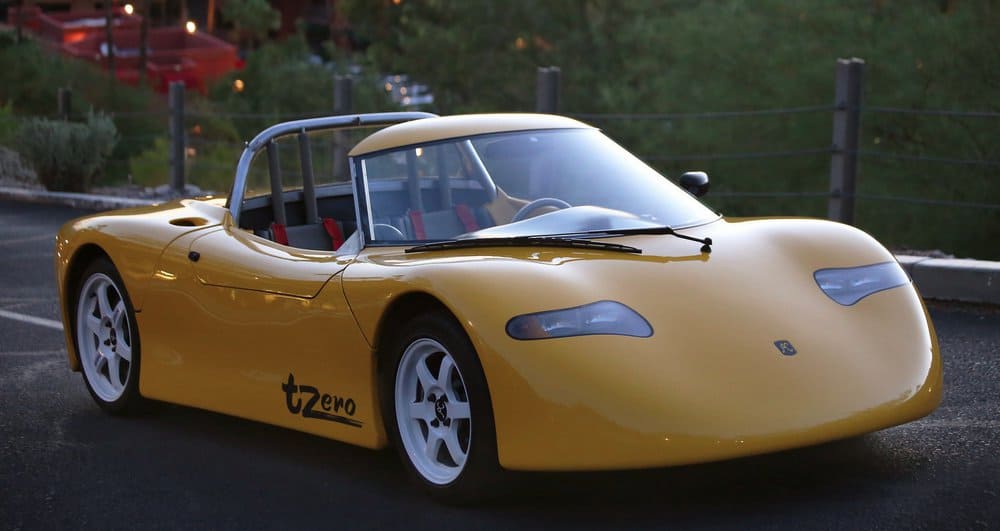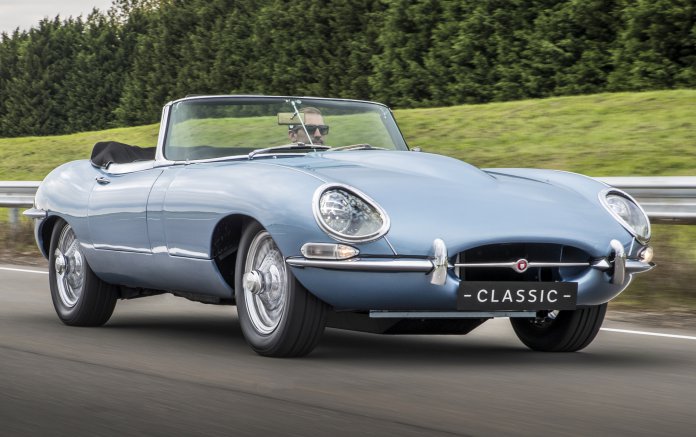(During the month of October, we’ll be publishing a series of stories on the “futureproofing” of collector cars, and on the future of seemingly all vehicles, through the use of electric powertrains. As always, your comments are welcome, and if you have converted a vintage vehicle to electric power, we’d love to share your story with others. Contact us at [email protected].)
There are two events likely to be recorded by future automotive historians as seminal moments in the “futureproofing” of the collector car. One was the wedding on a Saturday in mid-May 2018 of British Prince Harry and American actress Meghan Markle.
For the drive to their wedding reception, they used a 1968 Jaguar E-type roadster, which Jaguar Land Rover Classic had converted from its factory-installed 4.2-liter inline 6-cylinder petroleum-fed engine to a 220kW electric motor with a 40kWh lithium-ion battery pack.
E-type had become the E-type Zero, as in zero pollution. The powertrain switch also reduced vehicle weight by around 100 pounds, and the EV version was a full second 0-to-60 mph, Jag LR Classic reported.
But the more significant reporting was that by news media around the world, which not only covered the royal wedding but the news of the electro-mod Jaguar.

But even earlier, the other transformation took place, albeit with a smaller but also influential audience.
In the late 1990s, engineers Alan Coccini and Tom Gate launched a California workshop called AC Propulsion and were working to develop better electric motors and controllers and at some point, decided that instead of traditional lead-acid batteries, the lithium-ion batteries used in such things as laptop computers could be a better way to go. So, they installed 6,800 of them in a fiberglass kit car and called it the tZero.
Even in such volume, the batteries were relatively light in weight and could propel the car to 60 mph in little more than 3 1/2 seconds. They also extended the vehicle’s range nearly threefold.
The car not only was a sensation at one of Michelin’s Challenge Bibendums, a global showcase for cleaner, greener automotive technologies but at some point, Elon Musk was invited to take a ride in one of the handful of tZeroes produced and has credited the experience for inspiring his involvement in the Tesla.
Ironically, it is the Tesla electric powertrain that often is used in the electro-mod conversion of classic cars. But more on that in upcoming stories in our series.






Converting an E Type is just as costly as the car
Itself, so I think that I will keep filling it up with
94 octane at the local Chevron dealer.Although I like the Idea .
Yes, it is expensive, but Jaguar is among those working to produce a plug-and-play electric conversion kit, and prices figure to come down as supply of parts for such work expand.